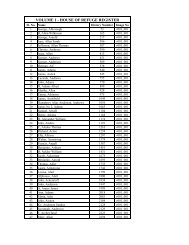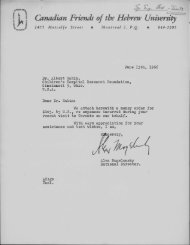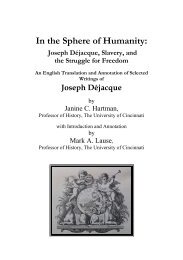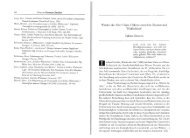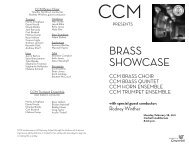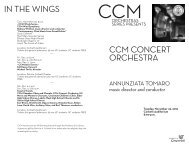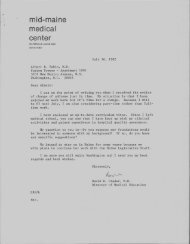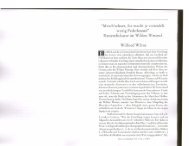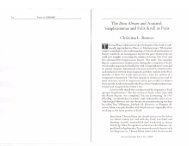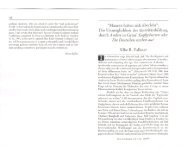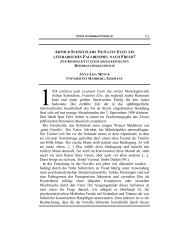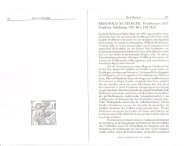Rilke's Die Turnstunde.pdf - UC DRC Home
Rilke's Die Turnstunde.pdf - UC DRC Home
Rilke's Die Turnstunde.pdf - UC DRC Home
You also want an ePaper? Increase the reach of your titles
YUMPU automatically turns print PDFs into web optimized ePapers that Google loves.
76 THE POETICS OF DENIABLE PLAUSIBILITY IN RAINER MARIA RILKE’S “DIE TURNSTUNDE”<br />
image to that of Karl’s corpse at the end of the story, which, as we have<br />
seen, Krix also describes as “ganz nackt.”<br />
A key passage in “<strong>Die</strong> <strong>Turnstunde</strong>” has Karl looking for a<br />
second time at his hands, this time “ganz darüber gebückt wie einer, der<br />
bei wenig Licht einen Brief entziffern will” (W 436-37). 27 He is alienated<br />
from his body and sexuality — which are depicted as illegible and<br />
foreign — and he approaches them as one would something to be<br />
analyzed and understood. This enterprise is not free from difficulty or<br />
stigma, however. It is as if there were little light to undertake it, and<br />
when Jerome approaches, Karl “erschrickt” (“is startled”) as if caught<br />
committing a proscribed act (W 437). This scene is emblematic of the<br />
status of homosexuality at the turn-of-the-century. Regarding same-sex<br />
desire, Sedgwick asserts that “there had in fact developed one particular<br />
sexuality that was distinctively constituted as secrecy: the perfect object<br />
for the by now insatiably exacerbated epistemological/sexual anxiety of<br />
the turn-of-the-century subject” (Epistemology 73). This epistemological<br />
terrain is typified, as Sedgwick points out, by the “imponderable and<br />
convulsive” relations of the open secret (Epistemology 80). The figure of<br />
Karl intently and anxiously attempting to decode his hands in a semisecret<br />
dim corner illustrates both the contemporary conditions of<br />
homosexual (self-)knowledge and the limits of depicting homosexuality.<br />
It also parallels at once the difficulty and interpretive labor required of<br />
the reader confronted with this inscrutable text as well as the narrator’s<br />
position and strategies.<br />
In his essay on “<strong>Die</strong> <strong>Turnstunde</strong>,” Dirk Dethlefsen addresses<br />
the issue of its narrator. He argues that the story presents neither a<br />
narrator nor a character with which readers might identify and thus<br />
frustrates attempts at orientation (249). Gérard Genette’s narrative<br />
concepts help to specify the particular type of narration Dethlefsen<br />
describes. “<strong>Die</strong> <strong>Turnstunde</strong>” is an example of what Genette calls<br />
“simultaneous narrating” in the present tense. It appears to unfold along<br />
with the events it recounts and thus seems “like the height of objectivity,<br />
since the last trace of enunciating […] now disappears in a total<br />
transparency of the narrative” (219). This apparent objectivity is also<br />
enhanced by a “heterodiegetic” narrator, one that is not a character in<br />
the story (248). Our narrator also features “external focalization” which<br />
designates a narrator who shares no knowledge of the characters’<br />
thoughts (189-90). At first glance this seems to describe the narrator<br />
exactly and accounts for Dethlefsen’s claim that there is no tangible<br />
narrator. Despite the accuracy of Dethlefsen’s observations, “<strong>Die</strong><br />
<strong>Turnstunde</strong>” does nevertheless contain a narrative voice. However, it



